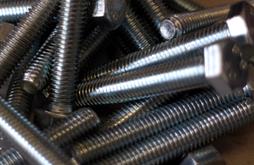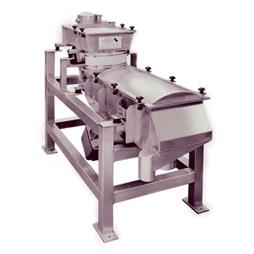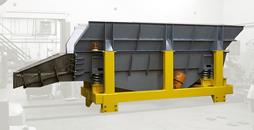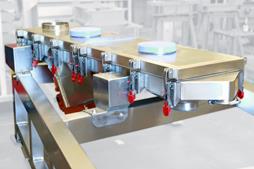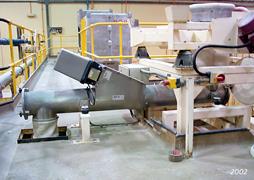Separating and presenting tricky materials with a vibratory feeder for packing in a production line
29-05-2018
Industrial vibration equipment, such as a vibratory feeder, can be used to separate and present products to loading or packing that are tricky to handle – and in doing so help to improve the efficiency and effectiveness of a production line and packing system.
Particularly difficult materials tend to be those that knit, tangle or compact together when being handled. This often includes irregularly shaped components and plastic mouldings as generally found in the building, DIY, automotive and electronic trades – such as wire products, pressings, screws, nails, bolts and fasteners.
Taking screws as an example, when emptied into hoppers or feeders they often entangle and subsequently compact rather than separate – meaning that packing becomes very difficult and cumbersome, slowing down production. However, when specially designed to suit the application, a vibrating feeder can separate and present tricky products such as screws through channels from horizontal to vertical, or vice versa, providing that the material is symmetrical and does not have features required to face a particular direction (i.e all screw heads facing right).
Separating and presenting screws
For example, we were asked to handle partially threaded ‘Spax’ screws up to 260mm long, and to present these aligned horizontally at a rate of 18,000 pieces per hour for hand collection and packing. A misalignment accuracy of no more than 1% was to be achieved and maintained.
‘Spax’ screws were proving to be tricky for packaging, as their long thin shape and course thread meant that they tangle easily and end up in a large matted mass when conveyed. For this application, we designed and manufactured a special two feeder system, fitted with unique features designed to break up the product mass. Each feeder was fitted with a 33Hz electromagnetic drive, which improved separation of the screws and resulted in good product movement and flow that could not be achieved with standard 25Hz or 50Hz drives. The performance of the vibratory feeder exceeded separation and alignment expectations to the extent that the screws were packed up to three times the previous rate.
When specifically designed to suit the application, a feeder driven by an electromagnetic vibrator that provides the necessary amplitude and peak acceleration required, can provide the perfect solution for feeding and presenting tricky materials for packing.

